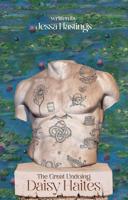Publisher's Synopsis
Excerpt from Industrial Democracy, Vol. 1
WE have attempted in these volumes to give a scientific analysis of Trade Unionism in the United Kingdom. To this task we have devoted six years' investigation, in the course of which we have examined, inside and out, the constitution of practically every Trade Union organisation, together with the methods and regulations which it uses to attain its ends. In the History of Trade Unionism, published in 1894, we traced the origin and growth of the Trade Union movement as a whole, industrially and politically, concluding with a statistical account of the distribution of Trade Unionism according to trades and localities; and a sketch from nature of Trade Union life and character. The student has, therefore, already had before him a picture of those external characteristics of Trade Unionism, past and present, which - borrowing a term from the study of animal life - we may call its natural history. These external characteristics - the outward form and habit of the creature are Obviously insufficient for any scientific generalisation as to its purpose and its effects. Nor can any useful conclusions, theoretic or practical, be arrived at by arguing from common notions about Trade Unionism nor even by refining these into a definition of some imaginary form of combination in the abstract. Sociology, like all other sciences, can ad vance only upon the basis of a precise observation of actual facts.
About the Publisher
Forgotten Books publishes hundreds of thousands of rare and classic books. Find more at www.forgottenbooks.com
This book is a reproduction of an important historical work. Forgotten Books uses state-of-the-art technology to digitally reconstruct the work, preserving the original format whilst repairing imperfections present in the aged copy. In rare cases, an imperfection in the original, such as a blemish or missing page, may be replicated in our edition. We do, however, repair the vast majority of imperfections successfully; any imperfections that remain are intentionally left to preserve the state of such historical works.























